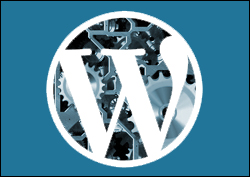

Welcome to Part 3 of our Web Site Traffic Blueprint article series, where we show you how to automate traffic to your website using WordPress.
In Part One of this series, we described the process, and explained why using an expertly configured WordPress website is the key to generating automated traffic …
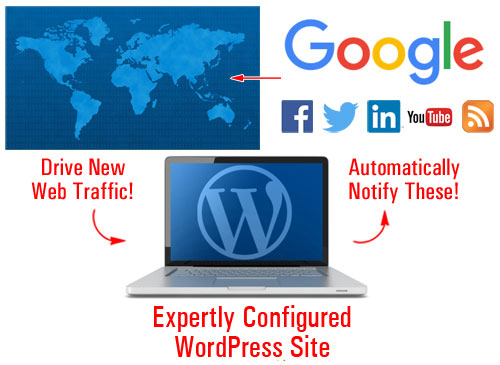

(With an expertly configured WordPress web site, all you have to do to automatically begin attracting more traffic is post new content on a regular basis!)
In Part 2, we focused on the setup phase of the traffic automation process. We helped you understand the best way to get started if you don’t have a web presence yet, how to set things up if you already have a site, and what to do if your site was built with WordPress.
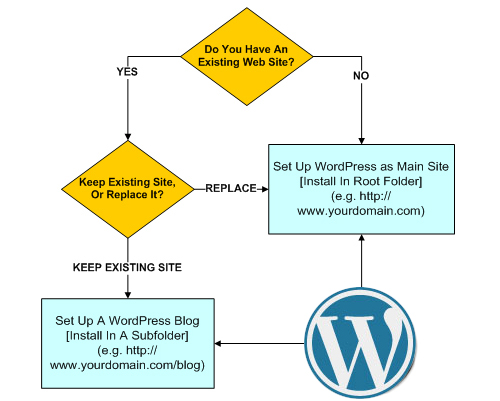

(In Part 2 we show you how to set up a WordPress website or blog on your domain)
In this article, we will look at the configuration stage of the traffic system. We explain how a WordPress site should be configured to get new visitors automatically as you start to post web content on your web site.
WordPress Web Traffic Automation System – Configuration Phase
The ability to attract more visitors to one’s website is often cited by business owners as their greatest challenge online. With business becoming so much more competitive, it’s worth exploring every opportunity you can to increase your own competitiveness online.
The ability to automatically generate traffic on demand can provide you with a tremendous advantage over other competitors. Having an expertly configured website gives your business an immediate competitive advantage from the very start.
The Configuration Process Is What Makes The Difference
There is a difference between an expertly configured WordPress site and a site that has been professionally set up by a website-building expert but not necessarily configured to take advantage of everything WordPress can offer.
Here is a simple way to understand the key difference:
An expertly configured WordPress site gives you a professional web presence and online business marketing automation!
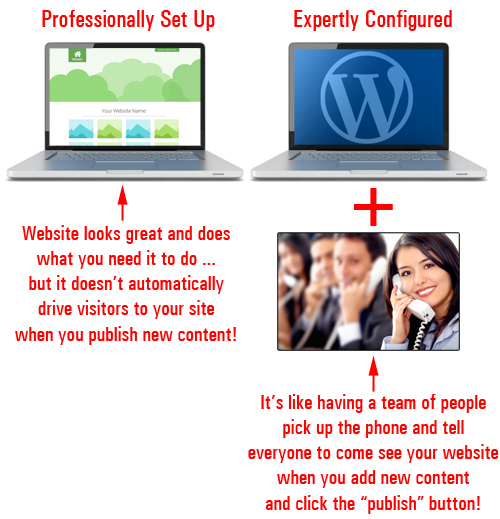

(An expertly configured site gives you a web presence with an automated online business marketing system!)
Not only is more labor required to build and integrate an automated online business marketing process into your website, it also takes a special kind of expertise.
Let’s illustrate this with an amusing story.
Are Experts Worth The Money They Charge?
Things are running smoothly in the gizmo-making factory when all of a sudden, production grinds to a halt.
No one can figure out what went wrong and so the floor manager decides to call in an expert to fix the problem.
Soon afterwards, the expert arrives and immediately heads to the control box. After staring at the box for 3 minutes or less, the expert then takes out a tiny little hammer and makes a gentle tap about one cm from the right-hand side of the control unit.
Immediately, every machine comes back to life.
The floor manager is grateful and relieved as he thanks the expert, who leaves as quickly as he had arrived.
A few days after resolving the incident, the factory manager receives a bill for $5,000.
Confused and outraged, the manager picks up the phone and calls the expert. Demanding to know why they were expected to pay so much for less than 5 minutes work, he then requests an itemized invoice and hangs up.
The next day, a bill of payment arrives and is placed on the manager’s desk. Upon opening the envelope, this is what he sees:
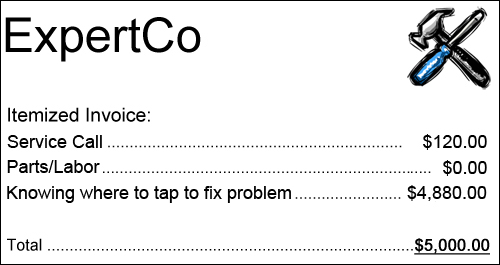

The main challenge most businesses face online is driving visitors to their sites.
How much money did the gizmo plant stand to lose when the machines ground to a halt and no one in the business was able to fix it? Did the expert not have the right to demand fair compensation for investing years building up the knowledge and expertise that allowed him to quickly assess and avert a potentially costly crisis?
Similarly, if you could have a WP website or blog set up so all you ever had to do is publish new content and Google, Facebook, Twitter, LinkedIn, YouTube and dozens of other traffic-generating online properties would be instantly notified, how much time and money would this save you?
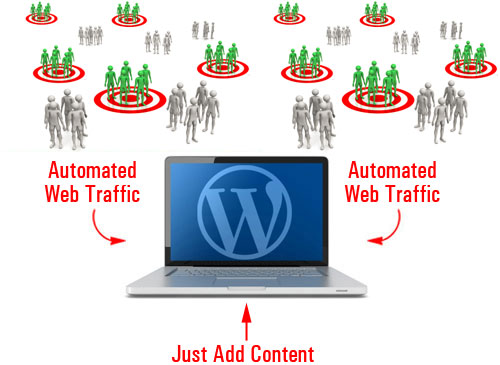

(How much time and money would you save if you could automate the process of attracting new visitors to your site?)
While the solution to many challenges is often ridiculously simple in hindsight, it rarely turns out to be that way.
Knowing how to expertly configure a WordPress site is more than just installing a website and configuring some basic settings. It also requires knowing where to tap! This includes knowing things such as:
- Which programs you need to install to add various functionalities to your site.
- Which 3rd-party services you need to set up to achieve certain outcomes
- Which settings you need to configure to ensure that everything works as envisioned, etc.
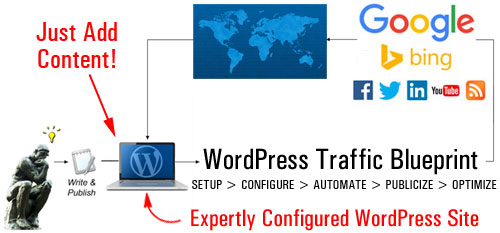

(Generating new traffic automatically with WordPress is a process that requires knowledge and expertise)
Although this stage of the WordPress traffic automation system may not seem technically difficult, it can be quite involved and complicated. It’s not as simple as installing and configuring a solution, clicking a couple of buttons … it’s all this and so much more.
Expertly configuring your website is a process that involves your web hosting server, your WP site, and various external sites …
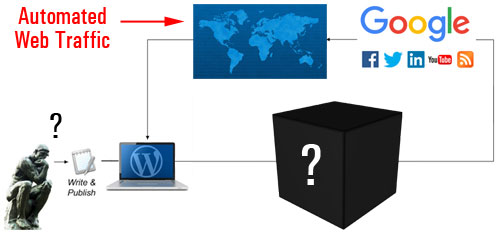

(The configuration stage involves more than just configuring a few WordPress settings)
If we were to create a simplified diagram of the configuration process, it would look something like this …
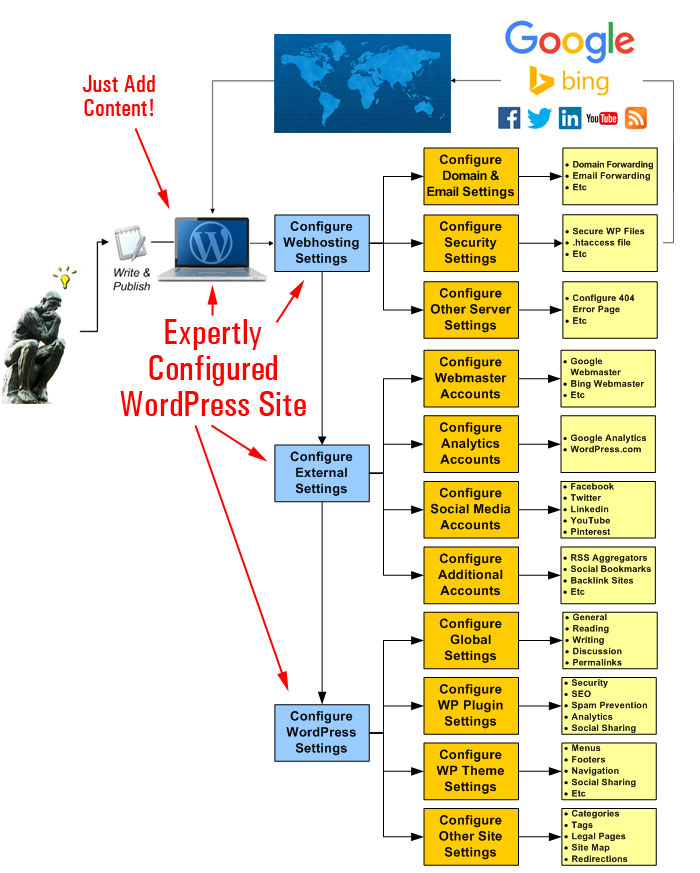

(A simplified diagram of the steps involved in the configuration phase)
Let’s examine these areas.
Your Server
We’re not talking about the process of configuring your web hosting account for website installation purposes (this should have been done during the Setup phase). We’re talking about tweaking settings in your server that affect how your site will handle web traffic …
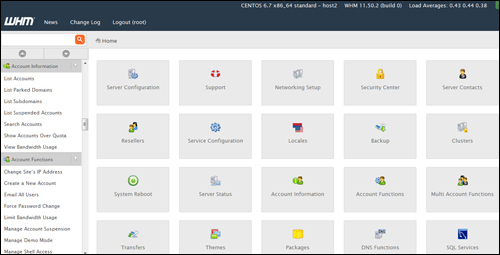

(In the configuration stage, your hosting account settings need to be fine-tuned for handling both good and bad traffic)
Not all traffic is beneficial traffic. Some of the traffic you can attract will be unwelcome traffic like spam, security threats, brute-force bot attacks, etc.
This stage of the configuration process, therefore, requires planning for both good and unwelcome traffic and then adjusting settings in your server accordingly. This could include things like spam protection and preventing security threats, to configuring domain and email redirections, etc …
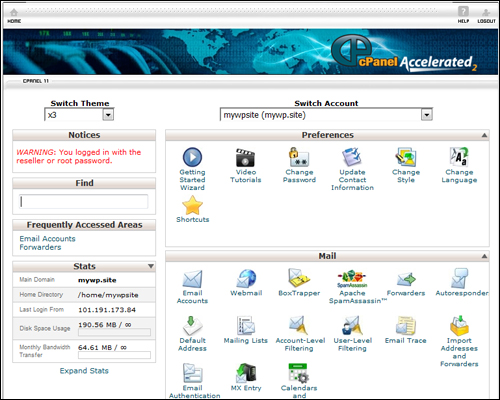

(Have you configured your webhosting settings for handling things like emails, page error redirects, etc?)
After fine-tuning your server settings and configuring these, the next step is to configure various third-party sites and online services.
External Services
The concept behind adding external sites is that all of your content will be posted to one central location (your site) and from there, it will get distributed automatically to other components of your web traffic generation system, or notify traffic-related web properties and applications.
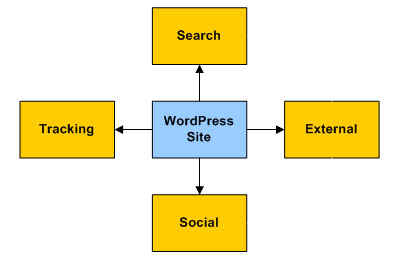

After incorporating these external sites into your traffic network, content linked back to your website gets automatically syndicated to search, social and aggregator accounts. Your content and website benefits from exposure online, helping you tap into new audiences and new sources of traffic.
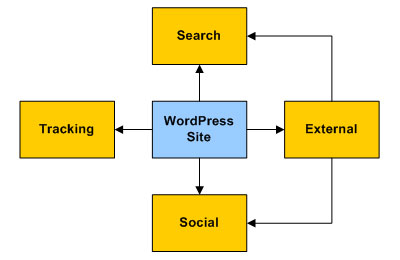

Some of the web properties and online services will need to have accounts set up before configuring your WordPress settings to help save time and some will need to be done later, during the automation phase.
For example, here are just some of the accounts you will need to have set up:
Google Webmasters
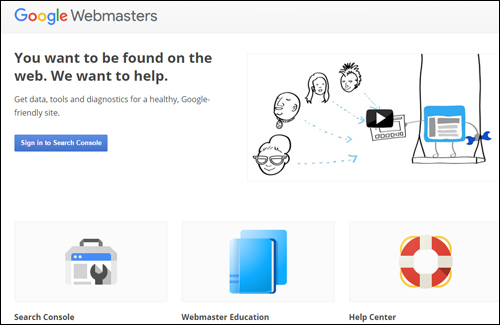

(Google Webmaster Tools)
Google Search Console lets you inform Google about your site’s pages, submit XML sitemaps for faster page indexing, and provides you with important data, tools and diagnostic reports about your website.
After setting up your account and entering site data, use this information with traffic-related settings in WordPress (e.g. using plugins like Yoast SEO) and other applications.
Google Analytics


(Google Analytics)
Google Analytics lets you improve your website’s traffic performance, SEO, marketing activities, and more, by tracking all user engagement, pages visited, keywords searched for, search engine referrals, etc.
After setting up your up your Google Analytics account and entered your site data, visitor tracking code can be added to WordPress via a simple plugin used with other applications.
Bing Data And Tools
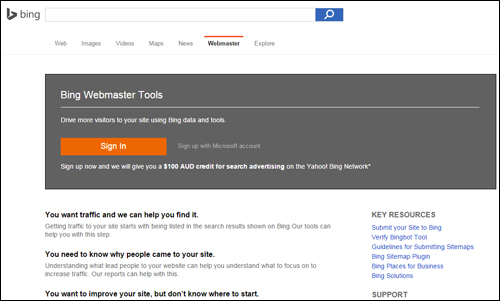

(Bing Webmaster Tools)
Bing Webmaster Tools is similar to Google Webmaster Tools. Once your Bing Webmaster Tools account has been set up, the details can be used to integrate and automate traffic-related settings and notifications in WordPress using plugins like Yoast SEO and other applications.
WordPress.com
(WordPress.com)
As discussed in Part Two, WordPress offers users a self-hosted and a hosted option. We recommended choosing the self-hosted WordPress option if you are planning to grow a professional online presence.
WordPress.com (the hosted option), however, provides some great features, which a number of WordPress plugins can access. We recommend setting up an account at WordPress.com, therefore, and we’ll show you how to integrate these features into your traffic generation system in Part Four of this series.
Social Media Pages
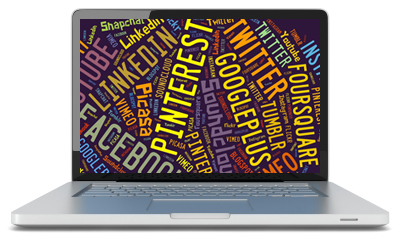

(Syndicate your content automatically to your social media and social bookmarking accounts and get new visitors to your site)
You will need to set up your social accounts before you can configure these as part of your traffic generation system.
After setting up and configuring everything, you will be able to syndicate your content automatically to your social media and social bookmarking accounts and drive new visitors to your site.
Make sure you have profiles set up with all of the leading social networks – Facebook, Twitter, Pinterest, LinkedIn, YouTube, etc.


There are many social bookmarking sites you can You can syndicate your content to lots of social sites. You don’t need to create accounts with all of them, just select those that will work well with your setup and/or content syndication tools.
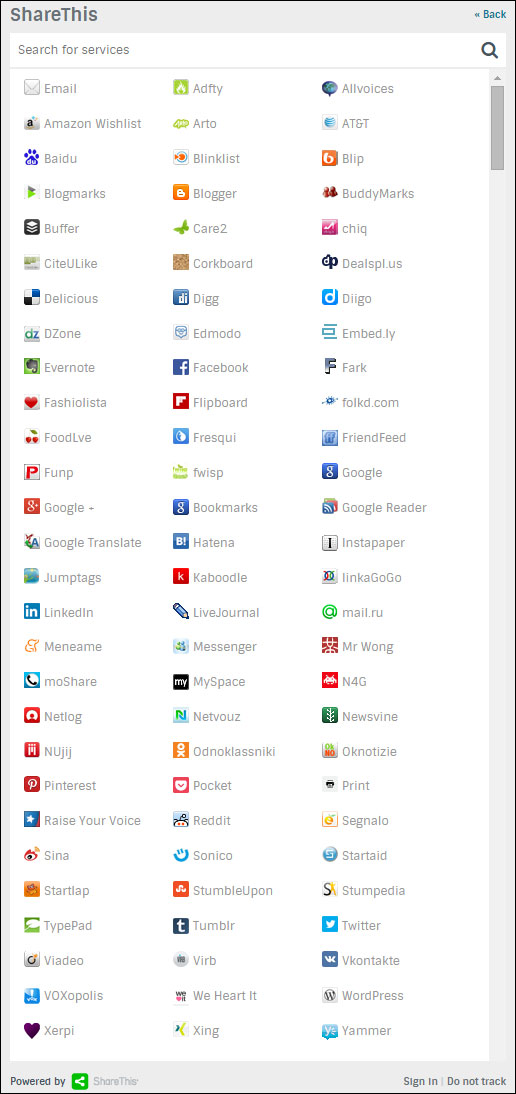

(You can syndicate your content to many social sites. Image source ShareThis.com)
Additional Platforms, RSS Aggregators, Etc.
There are a number of online technology platforms and content aggregators that can serve as second-tier sources of traffic. Some are free or provide free plans, and some are more suitable for enterprise-level applications.
For example, here is a content aggregator that lets you add your WordPress blog feed …
RebelMouse
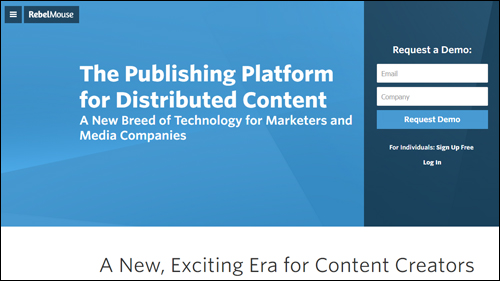

(RebelMouse)
RebelMouse is an aggregator for your RSS feeds and social profiles. Your content is displayed in a Pinterest-like format and visitors can follow your RebelMouse social feed.
![]()
![]()
There are various sites and platforms you can incorporate into your own traffic system. Please feel free to contact us if you would like to explore this area further and discuss a configuration plan to suit your needs.
Once you have configured your web server and set up external service accounts, it’s time to configure your site.
WordPress Traffic Configuration
The first step in configuring your site for traffic is to ensure that your global settings have been correctly set up.
Let’s go over some key areas.
Global WordPress Settings
Your WordPress administration area contains a Settings menu that allows you to modify your site’s main settings …
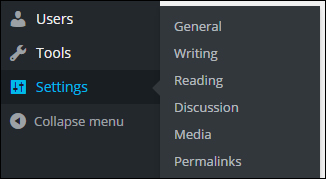

(WordPress settings section)
General Settings
Content entered into fields like Site Title and Tagline can influence your site’s SEO, search indexing, etc …
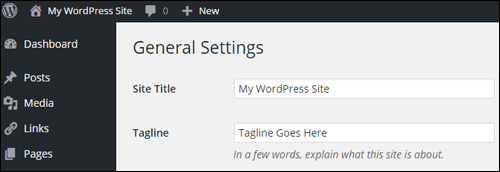

(Global Settings – General Settings Screen)
Writing
The Writing Settings area contains one of the most powerful and often overlooked automated traffic notification systems available to WordPress site owners …
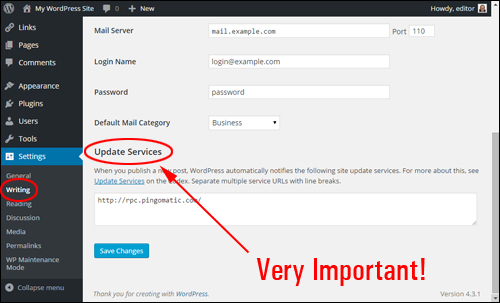

(WordPress Settings – Writing Settings Section)
As stated in the Update Services section,
When you publish a new post, WordPress automatically notifies the following site update services …
Unless you have purposely chosen to prevent search engines from indexing your site – see next section, then your site will automatically ping the list of services entered into the Update Services section
By default, when WordPress is installed, only one service is listed …
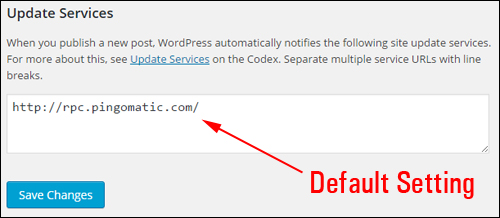

(Update Services – A Powerful Traffic Feature)
You can notify dozens of update services automatically with WordPress …
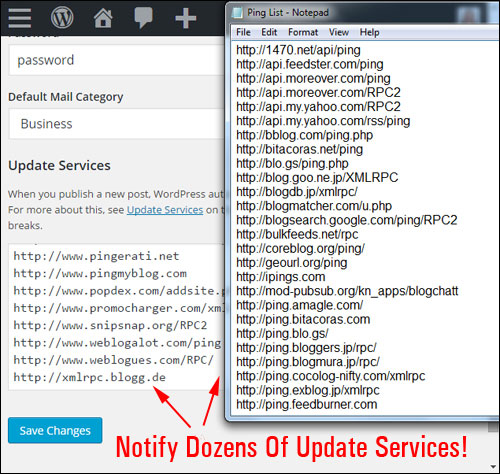

(Notify dozens of update services automatically!)
![]()
![]()
Download A Comprehensive List Of Ping Services For Your WordPress Site!
Click the link below to download a comprehensive list of reliable and authoritative ping services for your WordPress site or blog:
Download A List Of Ping Services For Your WordPress Site
***
Note: If you need help setting up the list of ping services on your site, we recommend using a professional web services provider. You can find professional WordPress service providers in our WordPress Services Directory.
Reading Settings
This section affects how your content gets seen by visitors when they visit your home page and blog pages.
The syndication settings in this section can influence traffic. For example, choosing to display the full content vs a summary of your post, affects how your content shows up in RSS feeds and blog post digests, and could impact someone’s choice to explore your content further, and whether or not they will visit your website or blog to read the rest of the content from a partial feed, or read the content in full without the need to click through to your site.
The main setting in this section as far as your traffic system is concerned is whether the Search Engine Visibility checkbox is ticked or not.
Typically, you would want search engines to visit your site. Leaving the box unchecked enables WordPress to automatically ping your update services list whenever new posts get published (see Writing Settings above). Unless you have a specific reason to discourage search indexing spiders from visiting your site, make sure this box is left unticked …
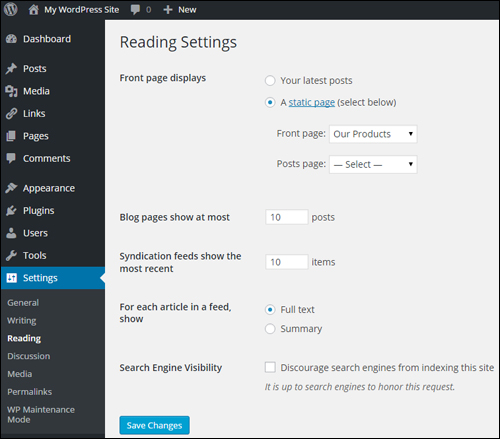

(Global Settings – Reading Settings)
Discussion Settings
Although discussion settings are mostly concerned with how users engage with content on your site, you have the option to allow notifications to sites linked to from your content, and to allow link notifications from other blogs (pingbacks and trackbacks). This can work for you, but it can also drive bad traffic in the form of SPAM comments …
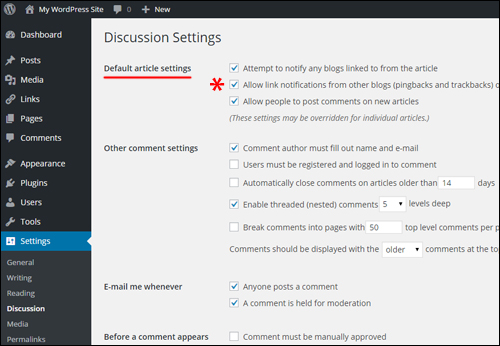

(WordPress Settings – Discussion Settings Screen)
Permalinks
Permalinks allow you to create SEO-friendly URLs …
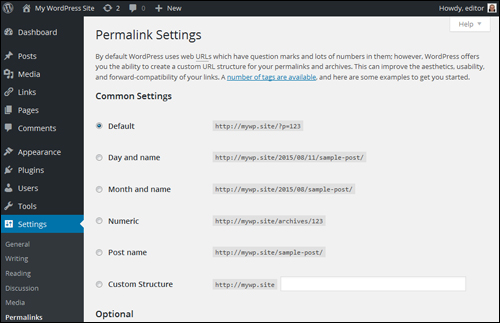

(WordPress Settings – Permalinks Section)
The examples below show some of the options for configuring your site’s search-friendly URLS …
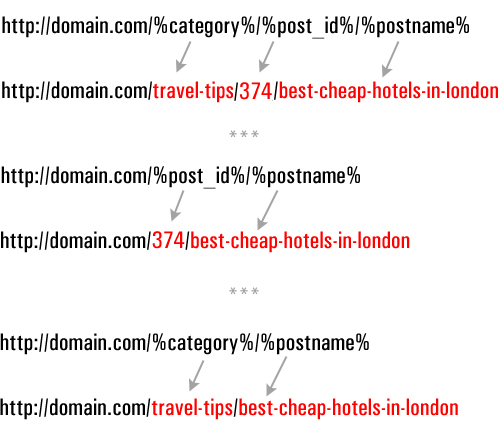

(Configuring SEO-friendly URLs)
We have created a detailed tutorial on using permalinks in WordPress here: How To Change Your WordPress Permalinks
Configuring WordPress Plugin Settings For Traffic Generation
WordPress provides users with plugins that can add just about every type of functionality to your site, including traffic generation.
Here are some types of plugin categories that affect traffic and plugin examples
Security Plugins – Blog Defender
Once again, it’s important to configure your WordPress site for dealing with the effects of both good traffic and bad traffic. Regardless of the type of business you run or plan to run online and how small you think your web presence is, website security is something you cannot ignore.


Security plugins like Blog Defender help to make your website invisible to attacks from hackers and bots.
More info:
SEO Plugins – Yoast SEO
WordPress SEO plugins help drive traffic by improving improving the way search engines find, crawl and index your website …


(WordPress SEO plugins like Yoast SEO help increase traffic by improving the search engine friendliness of your website)
Use a plugin like Yoast SEO to improve your website’s SEO. Once properly configured, this plugin not only makes your site easier for search engines like Google and Bing to find, classify and index, it also lets you specify how to display your content in Google’s search results and social media pages, e.g. Twitter, Facebook, and GooglePlus.
Social Plugins
Allowing visitors to share your content with members of their online communities can help boost traffic to your site, especially if you publish great content that adds real value to readers.


(You can add social sharing buttons to your site easily with free or inexpensive plugins)
There are loads of free or inexpensive social sharing plugins available for WordPress.
Many social sharing plugins let you choose which sites your content can be shared to, embed social buttons into your content, set up custom post messages, display/hide share counters (e.g. number of followers), etc. Some social share plugins even allow you to set up protected content sections on your site which visitors can unlock by sharing your page.
Theme Settings
As well as configuring various plugins, many WordPress themes also include features that help grow your traffic.
For example, in addition to options and settings for configuring the layout and design of your site, many themes also give you built-in options for improving SEO and site navigation structure for faster indexing, easily add analytics code, social sharing buttons, etc …
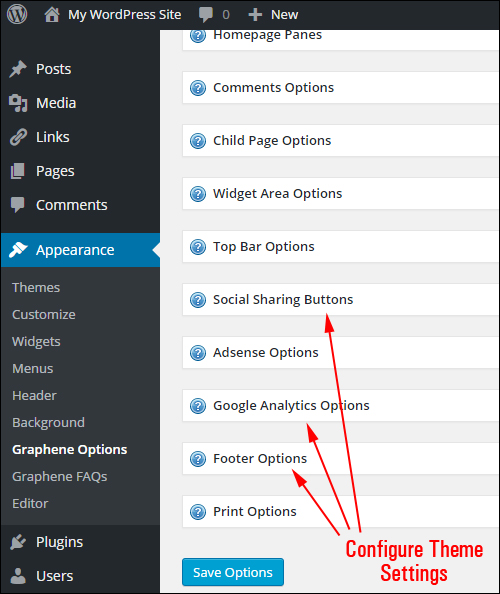

(Many WP themes like Graphene (a highly customizable free theme) include built-in traffic optimization features)
With many WordPress themes, adding social sharing features to your content is as easy as clicking a couple of buttons to enable the function …
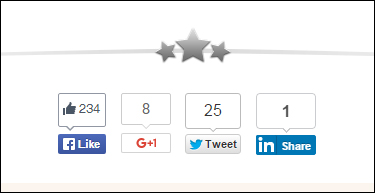

(Many WordPress themes have built-in social sharing features that can be easily turned on with the click of a button)
Additional Sections To Configure For Improved Traffic Results
Last (but by no means least) in the web traffic system configuration process, are the things that need to be set up outside of the global settings.
This includes:
Compliance Pages
Once again, when preparing your website for a growth in visitor numbers, it’s important to plan not only for how to deal with good and unwanted traffic but also for all the things that can go wrong as more and more people find and begin to visit your website.
If you make money online, it’s important that your site is found to comply with all government regulations.
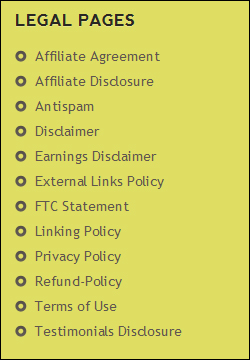

To learn more about why it’s important to have a compliant website, refer to this article:
WordPress Post Tags & Post Categories
WordPress tags & post categories help search engines better organize and index your website, which helps you get more traffic.
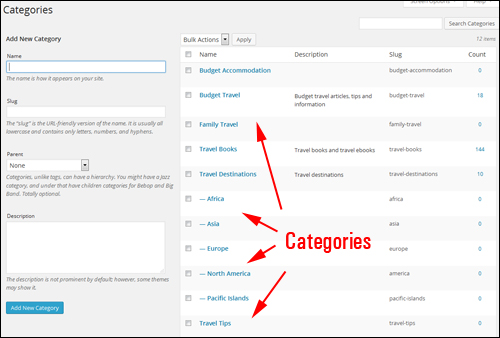

(Post categories help to improve your site’s search optimization, which improves traffic.)
As we recommend in this article, your website’s post categories and tags should be reviewed and set up earlier on, during the Website Planning Process.
When configuring your website or blog to automate and improve traffic, you will want to review and make sure that your site’s categories and tags have been set up correctly to deliver optimal benefits.
Add A WordPress Site Map
A site map that lists all of your posts and pages to visitors is not only a useful navigation tool for users, it can also help external tools find your online content …
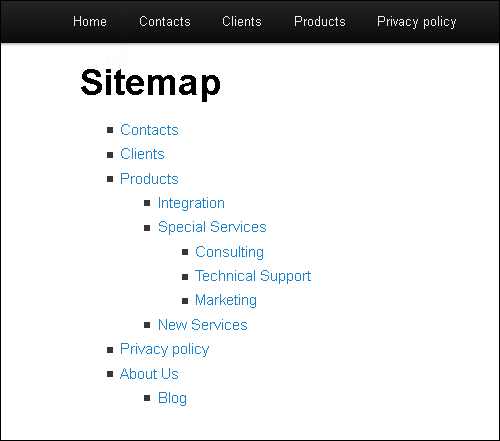

(Site Map – great for visitors and beneficial for traffic too!)
![]()
![]()
Note: An HTML site map and an XML sitemap are not the same things. Although search engines like Google will index your site just from an XML sitemap (which plugins like Yoast SEO can provide – see earlier section), making it easier for visitors to find more pages on your site can result in increased traffic.
404 Page Not Found – Don’t Forget To Configure It!
When visitors type in the wrong URL or click on an invalid hyperlink, they will normally be presented with an error – page not found message …
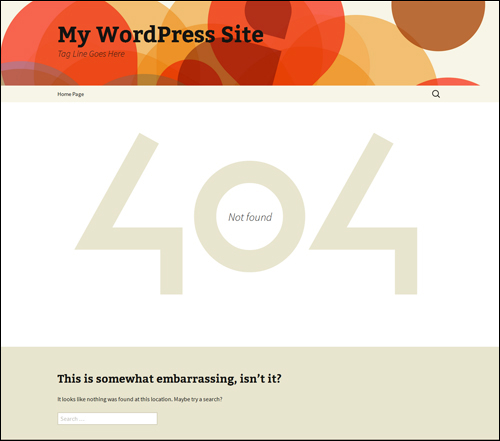

(Default WordPress 404 Not Found page)
Configuring your 404 Error Page allows you to redirect traffic that may otherwise be lost. …


(Configuring your 404 Not Found error page allows you to recover traffic that may otherwise be lost.)
![]()
![]()
Although a 404 page can be set up in your server, there are several WordPress plugins that allow you to easily configure your 404 page from your WordPress admin area.
WordPress Traffic Automation Blueprint: Configuration Process – Summary
Once your website has been fully set up and expertly configured, all you have to do to automatically begin attracting more web traffic is post content on a regular basis.
The process of expertly configuring your WordPress site, however, is quite involved and elaborate and requires the configuration and integration of a number of different elements and web properties …
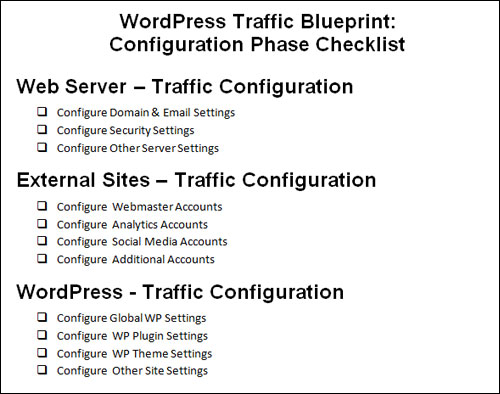

(Traffic System – Configuration Phase Checklist)
![]()
![]()
![]()
The expertise involved in expertly configuring a WordPress site can take many web developers a long time to acquire.
Once you have expertly configured your WordPress site, the next step is to automate the aspects of the process that can be automated. This step is explained in the next section of our WordPress Traffic Automation Blueprint series.
This is the end of Part 3
To read more, click here:


![]()
![]()
![]()
This article is part of a comprehensive series of articles aimed at helping website owners learn how to grow their business using a WordPress-driven website and proven web marketing methods.
Subscribe To WPCompendium.org And Get Notified When New Tutorials Get Published!
***
"I was absolutely amazed at the scope and breadth of these tutorials! The most in-depth training I have ever received on any subject!" - Myke O'Neill, DailyGreenPost.com
***

